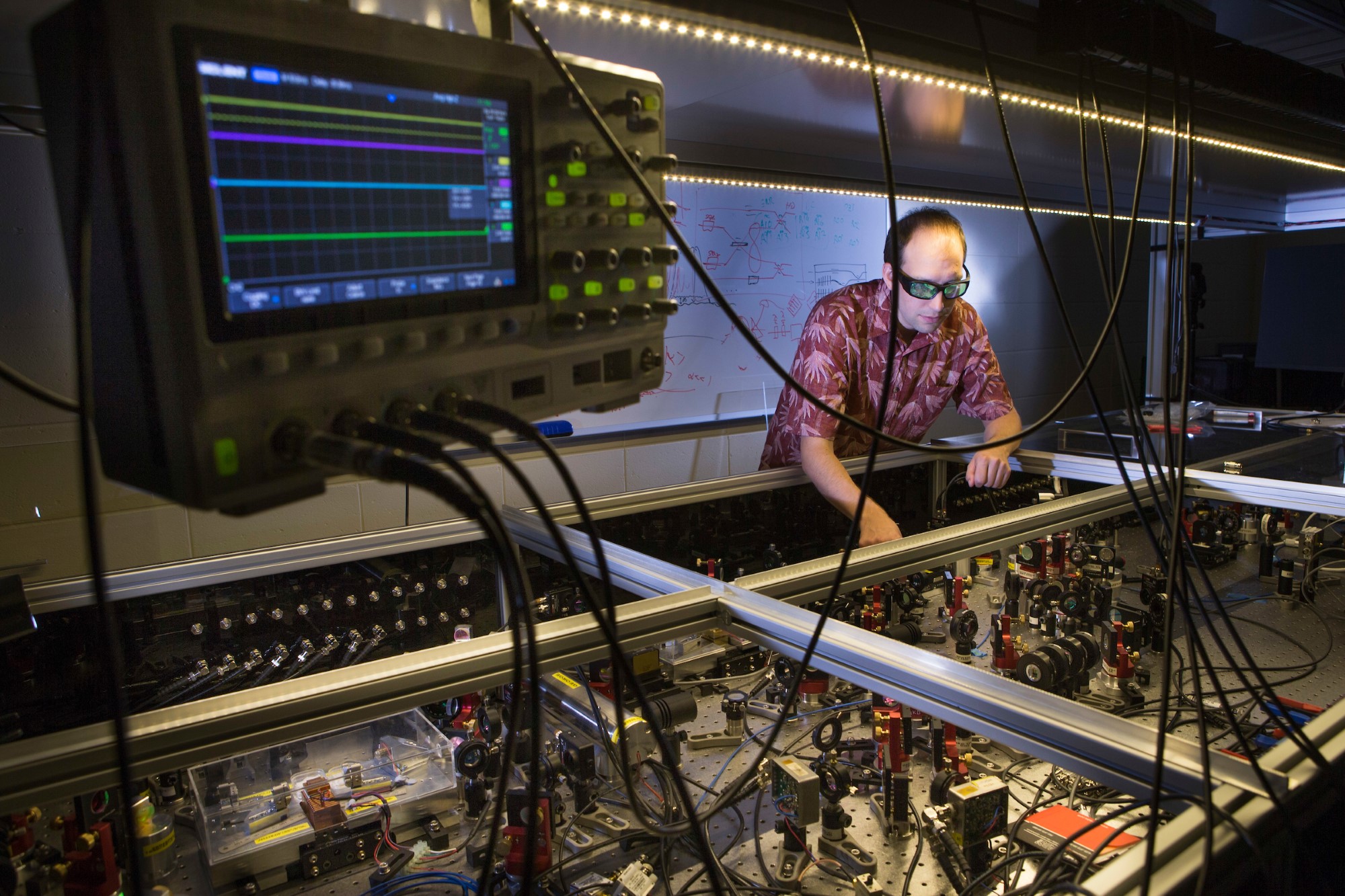
Research projects
Discover the forefront of astronomy and astrophysics through our projects, ranging from deep-space communication systems to groundbreaking adaptive optics. Explore our diverse, ongoing research initiatives shaping the future of space science.
Displaying 31 - 45 of 133 project(s).
Measuring asteroid properties with the Kepler Space Telescope to find Future Asteroid Mining Targets
Theme
- Stellar and planetary astronomy
Student intake
Open for Bachelor, Honours, PhD students
Observatory
People
- Dr Bradley Tucker, Supervisor
This project aims to measure both distances and velocities for 100,000 galaxies and so map the visible and dark matter within a billion light-years.
Theme
- Structure and evolution of the Cosmos
This project aims to measure both distances and velocities for 100,000 galaxies and so map the visible and dark matter within a billion light-years.
Theme
- Structure and evolution of the Cosmos
In the spectra of distant stars, we can often find a series of absorption features, such as Diffuse Interstellar Bands (DIBs) or those of neutral atomic potassium, K I. Although the exact carriers of DIBs are still a matter of debate, various candidates have been proposed over the years.
Theme
- Galactic archaeology
The successful applicant will join the ANU team and will participate in the design and testing of the Adaptive Optics Tracking and Pushing (AOTP) system.
Theme
- Instrumentation
Study of the statistics of turbulent, magnetised gases, relevant for the structure and evolution of the interstellar medium, the formation and evolution of stars and galaxies, using a combination of supercomputer simulations, theory, analytical calculations, and comparison to observations.
Theme
- Stellar and planetary astronomy
- Structure and evolution of the Cosmos
Student intake
Open for Bachelor, Honours, PhD students
Observatory
People
- Professor Christoph Federrath, Supervisor
The kinematics and morphology of typically massive disk galaxies has changed dramatically over the last ~9 Gyrs.
Theme
- Structure and evolution of the Cosmos
Student intake
Open for Honours, PhD students
Observatory
People
- Associate Professor Emily Wisnioski, Supervisor
The goal of this project is to make predictions for the observable gamma-ray signatures of different plasma physics models for cosmic ray transport.
Theme
- Stellar and planetary astronomy
- Structure and evolution of the Cosmos
In each project, students will utilise data from some of the world’s most powerful radio telescopes, including ASKAP, Parkes, and the Jansky VLA to study the magnetised gas in and around the radio lobes inflated by supermassive black holes.
Theme
- Black hole phenomena
- Structure and evolution of the Cosmos
Student intake
Open for Bachelor, Honours, PhD students
Observatory
People
- Dr Craig Anderson, Supervisor
This project involves instrument modelling, science simulation, electro-optical, and system design of a compact spatial heterodyne spectrograph instrument.
Theme
- Instrumentation
Containerised applications can improve modularity when interfacing hardware from different vendors across a variety of machines.
Theme
- Instrumentation
Student intake
Open for Bachelor, Honours students
People
- Dr Jesse Cranney, Supervisor
- Dr Michael Copeland, Supervisor
Containerised applications can improve modularity when interfacing hardware from different vendors across a variety of machines.
Theme
- Instrumentation
Student intake
Open for Bachelor, Honours students
People
- Dr Jesse Cranney, Supervisor
- Dr Michael Copeland, Supervisor
The aim of this research is to determine the correlation of the tip-tilt to confirm that the downlink can be used as a reliable reference source for adaptive optics applied to the uplink signal.
Theme
- Instrumentation
Magnetic fields are present throughout the universe on all scales: from planets and stars, star-forming clusters and spiral arms, entire galaxies, to galaxy clusters and cosmic filaments.
Theme
- Galactic archaeology
- Structure and evolution of the Cosmos
This project aims to conceptualize a UV astronomical space mission to explore the interstellar medium (ISM) in the Milky Way and nearby Local Group Galaxies. Utilizing recent UV coating and detector advancements, the proposed mission involves high-throughput, compact UV spectroscopic instruments.
Theme
- Instrumentation
- Structure and evolution of the Cosmos
Student intake
Open for Bachelor, Honours students
People
- Dr Andrew Battisti, Supervisor
- Dr Joice Mathew, Supervisor
